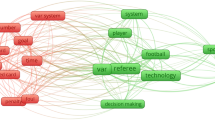Conclusion
Increasingly, economists are utilizing standard microeconomic analysis in an attempt to better understand the world of professional sports. However, since most of microeconomic theory is based on profit-maximizing behavior, the assumption of profit maximization in the sporting world must first be justified before microeconomists can legitimately apply their tools. In this paper, we have shown that some existing empirical evidence regarding the elasticity of demand for tickets to professional sporting events which, on the surface, seems to raise questions about profit-maximizing ticket pricing policy is not necessarily inconsistent with team profit maximization.
We have offered here a theory of team sports ticket pricing, based on the home field advantage, which implies that the traditional price elasticity of demand, measuring the ceteris paribus effect of changing ticket prices on attendance, is less elastic than is the elasticity of demand relevant for team profit maximization. The results of the theoretical analysis generated the prediction that accounting for simultaneity between attendance and team performance would result in a more elastic point estimate of the elasticity of demand for tickets. This hypothesis was supported using data from professional baseball. Moreover, the model generated predictions about how traditional, ceteris paribus elasticities of demand for tickets are likely to vary across different professional team sports. Again, these predictions were consistent with the results of existing empirical work on professional baseball and basketball. Although the assumption of profit-maximization as applied to professional athletics is far from fully vindicated, the results of this work can certainly be used as one piece of evidence for those who continue to use microeconomic theory to better understand the world of professional sport.
Similar content being viewed by others
References
Baumeister, Roy F. and Andrew Steinhilber. “Paradoxical Effects of Supportive Audiences on Performance Under Pressure: The Home Field Disadvantage in Sports Championships.”Journal of Personality and Social Psychology, 27, No. 1, 85–93.
Becker, Gary S. “A Note on Restaurant Pricing and Other Examples of Social Influences on Price.”Journal of Political Economy, October 1991, 1109–16.
Blair, Roger D. and Richard E. Romano. “Pricing Decisions of the Newspaper Monopolist.”Southern Economic Journal, April 1993, 721–32.
Edwards, John. “The Home-Field Advantage.” inSports, Games, and Play: Social and Psychological Viewpoints, 2nd edition, edited by Jeffrey H. Goldstein. Hillsdale, N.J.: Erlbaum Associates, 1989.
Ferguson, D.G., Kenneth G. Stewart, J.C.H. Jones, and Andre Le Dressay. “The Pricing of Sports Events: Do Teams Maximize Profit?”Journal of Industrial Economics, March 1991, 297–310.
Gayton, William F., Sharon A. Mutrie, and Joseph F. Hearns. “Home Advantage: Does it Exist in Women's Sports?”Perceptual and Motor Skills, 65, 1987, 653–4.
Noll, Roger G. “Attendance and Price Setting.” inGovernment and the Sports Business, edited by Roger G. Noll. Washington, D.C.: The Brookings Institution, 1974, 115–57.
—. “Major League Sports.” inThe Structure of American Industry, 6th ed., edited by Walter Adams. New York: Macmillan, 1982, pp. 348–87.
Official Baseball Dope Book, St. Louis: The Sporting News, 1980.
Places Rated Almanac: Your Guide to Finding the Best Places to Live in America, Chicago: Rand McNally & Company, 1981.
Quirk, James and Rodney D. Fort.Pay Dirt: The Business of Professional Team Sports. Princeton, N.J.: Princeton University Press, 1992.
Salant, David J. “Price Setting in Professional Team Sports.” inDiamonds are Forever: The Business of Baseball, edited by Paul M. Sommers. Washington, D.C.: The Brookings Institution, 1992, 77–90.
Scully, Gerald W.The Business of Major League Baseball. Chicago: The University of Chicago Press, 1989.
Varca, Philip E. “An Analysis of Home and Away Game Performance of Male College Basketball Teams.”Journal of Sport Psychology, 2, 1980, 245–57.
Zimbalist, Andrew.Baseball and Billions: A Probing Look Inside the Big Business of Our National Pastime. New York: Harper Collins, 1992.
Author information
Authors and Affiliations
Rights and permissions
About this article
Cite this article
Boyd, D.W., Boyd, L.A. The home field advantage: Implications for the pricing of tickets to professional team sporting events. J Econ Finan 20, 23–31 (1996). https://doi.org/10.1007/BF02920889
Issue Date:
DOI: https://doi.org/10.1007/BF02920889




